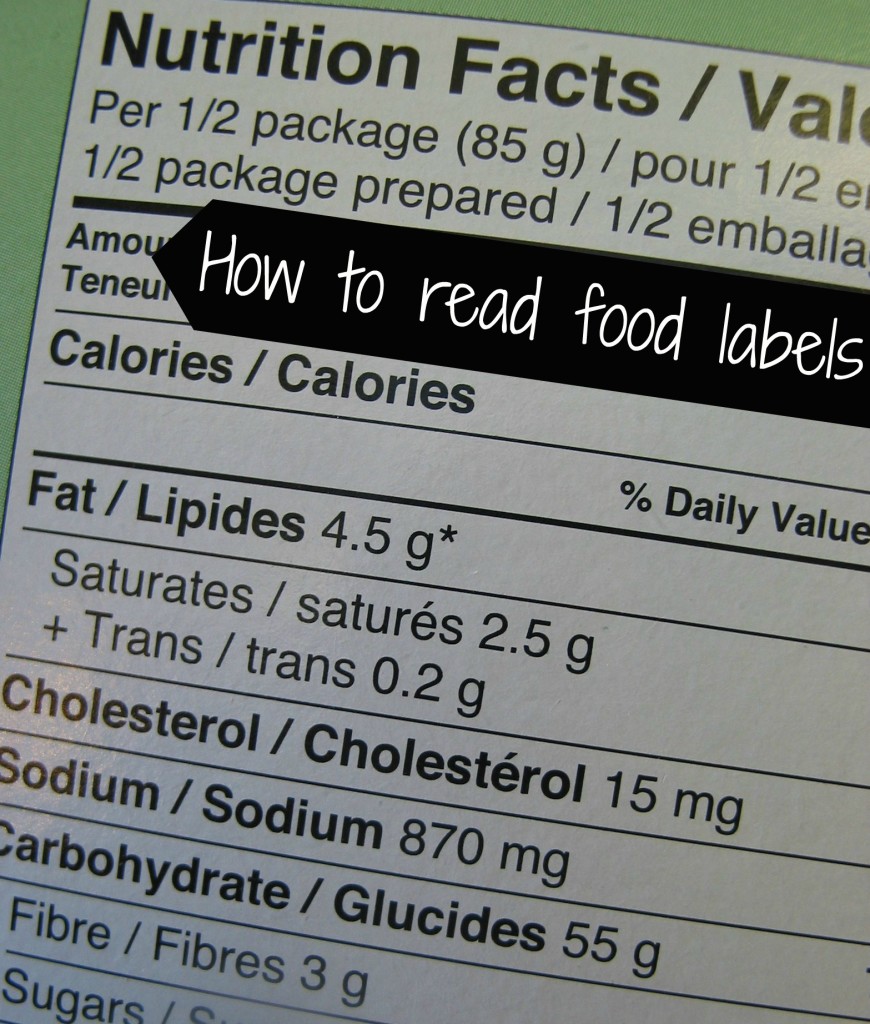Wake up. Stumble into kitchen. Take cereal box from pantry. Pour into bowl. Add milk. Reach for spoon. Sit down at table. Eat.
It’s that simple, right? Well, maybe not. If your breakfast of choice is cereal, why did you choose that particular cereal? The cereal aisle at grocery stores is an impressive line-up of bright packaging, enticing pictures, and promising health claims. The amount of choice we have is almost absurd. If your health is important to you, you could potentially spend a ridiculous amount of time reading label after label, trying to decipher the information presented to determine which product is the best for you and your family.
One of the definitions of rhetoric is that it involves using socioeconomic strategies to change behavior by dressing up words to get people to buy an idea or product. The rhetoric used on food packaging absolutely falls under this definition.
The first step to being able to read nutrition labels is to learn the basics. Health Canada has a simple two-page document breaking down the nutrition table. But there is more to a food package than just the nutrition label. The ingredients list will tell you exactly what is in the food, whereas the health claims are a sneaky way of tricking the consumer into believing that the food they’re choosing is healthier than it actually is.
There are a number of health claims that a product can make but many of them are misleading. “Light” is probably the most misleading claim of all. Although it can mean that the food is reduced in fat compared to the regular product (or compared to other brands), more often than not it refers to the coloring or the taste of the food. Oil is often described as “light,” which might lead people to the conclusion that it has fewer calories than other kinds of oils, but in truth it is simply describing the way it looks and tastes.
Other labels are misleading regarding the amount of nutrients in the food product. For example, the label “trans fat free” can be employed when the product contains less than 0.2 grams of trans fat per serving; in this case, the serving is often smaller than the amount that we will actually be eating. That 0.2 grams can really add up over time, which could easily cause us a myriad of health problems, even though we may have believed that we were eating something that was trans fat free.
Food manufacturers take advantage of using vague terminology to describe their products, correctly assuming that most consumers won’t do much investigating beyond the initial glance at the package before popping it into the grocery cart. It would be wise to look past the front labels and health claims—even go so far as to ignore them completely—and instead focus on the nutrition label and the ingredients list. The ingredient list cannot be fudged, so you can be sure to find out the truth about what you are eating if you look at that list first.
This is the nasty side of rhetoric: it is being used to persuade and manipulate people, twisting the facts so that we don’t know what we are really buying. As always, it pays to be aware of what we are eating. Food companies, just like any business, are looking to make a profit first and foremost. That means that they will stoop to just about any means to convince us, the consumers, that we should choose their product. Rather than blindly trusting in the claims made on any commercial product, we should take the time to expand our knowledge by being aware of these sneaky tricks. Sifting through the deceitful “twaddle” is worth it to protect our health and also to improve our understanding of the media at large. Facts and figures can be twisted when vague terms are used. The more specific a claim is, the closer we are to knowing the reality of what we are buying.

I actually avoid buying “products” and buy “produce” instead… This attitude started with food, but has crept into other areas, like personal products and cleaning products. The simpler the better…
Ugh, that whole whole trans-fat deceptive labeling drives me nuts! However, in the US they can get away with .5 grams per serving and still say No Trans Fat. Interesting that Canada has stricter guide lines regarding trans-fat (I didn’t know that). Still any trans-fat is TOO much trans-fat, but labels are so tricky. The more aware people become the better. Thanks Sagan!
Hanlie- I do as well. I try to buy all the foods that DON’T require nutrition labels. Makes it all around easier to know exactly what I’m eating, too.
Jolene- the guidelines are very slightly different, but I think that even that slight amount can be a bit helpful. And I agree: any amount of trans fat is far too much.
I spend a lot of time reading labels! Put plenty of products back on the shelf too 🙂
I used to only pay attention to the “stats” on labels, but I’m learning now to always read the ingredients. It is AMAZING what they sneak in to something you think is healthy. I feel so betrayed sometimes! 🙂
Thankfully nowadays I’m buying so much produce that I don’t have to worry about labels. But I can’t resist my yogurt and cheese!
[…] writing about analyzing the rhetoric behind nutrition labels on food products over at Living Rhetorically in the Real World. Check it out to learn how to decipher labels and to […]